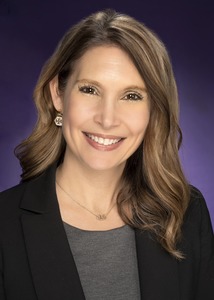Digital-First Philanthropy: What Healthcare Can Learn from Higher Education
// By Marcia Simon, APR //
 Did you cancel fundraising events during the pandemic? How did your development team find other ways to successfully keep donors engaged and giving?
Did you cancel fundraising events during the pandemic? How did your development team find other ways to successfully keep donors engaged and giving?
Without the galas, hospital tours, and meetings with doctors and researchers, the pandemic has no doubt created a new fundraising challenge. But as with other aspects of life, the pandemic has forced organizations dependent on donations to think differently and move forward in new ways.

Chris Snavely, managing partner, Ovrture
“The old days of treating donors and prospects as monoliths are gone. Today it’s about high-personalization values,” says Chris Snavely, managing partner at Ovrture, an enterprise software platform built specifically for fundraising.
Ovrture’s digital platform keeps donors engaged by delivering personalized updates about ongoing work, progress, and needs. Consider that 98 percent of high-net-worth individuals access the internet daily; 65 percent of them would be willing to give more to charitable organizations they support if they felt they really knew them, according to statistics provided by Ovrture.

Michelle Clark, associate vice chancellor for advancement strategy and administration, Texas Christian University
Texas Christian University (TCU) found a way to keep relationships with major donors strong during the pandemic by delivering personalized videos shot with a smartphone. But technology alone is not the answer.
“We can use technology to help communicate in a way that’s compelling, but at the end of the day it’s really about those strong personal relationships,” says Michelle Clark, associate vice chancellor for advancement strategy and administration at Texas Christian University (TCU).
Tracking and analytics allow a development team to personalize content to a prospective donor’s profile rather than pitch one big overarching mission.
“Do major donors give to a campaign theme? Are they convinced by broad strokes? Are they willing to be seen as part of a group rather than as individuals? We think not,” explains Snavely. “The most important reason major donors give is because an organization can deliver the precise change the donor wants to see in the world.”
Business intelligence provided by platforms such as Ovrture leverages tailored communications regarding proposals and gift agreements, and delivers personalized videos about very specific gift-giving opportunities closest to a donor’s heart.
Personalization is not a matter of inserting [YOUR NAME HERE]. “It’s about our folks understanding the strengths of our university and the good we’re trying to do in the world, and also understanding what our individual donors are passionate about, and where the two overlap,” says Clark.
Video – When Production Value Takes a Backseat to Personalization
Imagine your prospective donor visiting a website that launches a video of your CEO greeting the donor by name, acknowledging previous support, and providing a current update.
“We have to cross the Rubicon so the communications department can ask the CEO, for example, ‘Hey, give me 60 seconds to talk to this prospective donor who is interested in lung cancer screening and how they can make a difference.’ The production value on your smartphone may be low, but the value of this data-driven hyper-tailored message is high,” explains Snavely.
Analytics then allow the development officer to see how many times the recipient viewed the video, or if they skipped the video and focused on a particular text section instead. Where a person clicks — videos, PDFs, descriptions — provides valuable insight about how to focus the next message.
Infusing Technology with Communication
“The biggest challenge we see with the purchasers of technology, such as our enterprise software, is that they think the problem is solved when they hit the launch button. But getting the technology ready isn’t the endgame; it’s the beginning,” says Snavely.
Clark totally agrees. TCU has been using Ovrture’s platform for a couple of years. “The technology is almost the easy piece. It’s then figuring out how to get your MarCom and development people to think in a different way,” she says. “Digital is not the thing you add on at the end. It becomes the base of your communication strategy.”
TCU used a concentric-circle model, starting with a very small group of development officers who were early adopters of digital technology. They worked as a cohort sharing best practices and supporting one another. As the circle expanded outward with additional development officers, they leaned on the early tech-savvy users to bring others along in the system.
Keeping Donors Connected During the Pandemic
TCU had already started using the Ovrture platform in 2019 as part of the public launch of a $1 billion fundraising campaign. It was beginning its transition to digital when COVID-19 hit and abruptly accelerated the move into a full-scale digital mode.
Ovrture became a primary tool to check in with people on how the campus was responding to the pandemic. “The sense of warmth and personalization makes the viewer feel like they’re connected. The video capability sounds simple but is really meaningful when a development officer shoots a quick video on their phone,” Clark says. “During the pandemic, we personalized messages to let donors know we were okay and were thinking about them, too, that students and faculty were adapting well, and great things were still happening.”
While casual smartphone-shot videos are effective for personalization, it’s a balancing act to combine them with the highly produced videos people are accustomed to seeing.
“The platform itself lends a sense of sophistication and polish that elevates anything you put into it,” says Clark, adding that it’s not the same as shooting a smartphone video and texting it to someone as a standalone. “We would never lead someone to a site that only has low-quality video.”
The approach might begin with a short, personal, informal video introduction that links out to a highly produced piece on the main university homepage. When someone hears their name in the intro, it connects them in a way they don’t feel when they watch a highly polished video. “But we need that big video, too,” says Clark. “Even though the viewer knows it wasn’t made just for them, it adds a level of excitement.”
The data TCU pulls from Ovrture shows whether the viewer preferred the video or the articles, the most-visited content, and if they watched on mobile or desktop. It gets very granular. Everything is optimized.
Snavely comments that higher education is about five years ahead of healthcare in terms of fundraising innovation.
Virtual Meetings with Prospective Donors
Since the COVID pandemic began, TCU’s development officers have been conducting more virtual interviews with prospective donors because the pandemic restricted plane travel and in-person visits. These virtual events have increased alumni engagement by 50 percent. In fact, TCU hosted 56 online events for alumni and other stakeholders over the past 10 months.
But when the Zoom meeting is over, how do you follow up as you prepare “The Ask”?
“Video today is the new handwritten thank-you note that for so long has been the epitome of personal outreach. It takes it up a notch and can be even more meaningful because your sense of personality and warmth can come through,” says Clark.
Moving to a digital-first fundraising platform is an investment, but there are major cost savings involved, too, says Snavely. For instance, there’s no printing or postage required. It’s a new way of thinking.
Clark notes, “We’re positioning our team so technology can do what technology is good at, and people can do what people are good at. It’s still about the personal connection.”
Marcia Simon, APR, writes about healthcare, health tech, and wellness. As principal of MSE Public Relations, she manages content, strategic communication, and media relations for clients. Email her at marcia@mseusa.com or connect at LinkedIn.com/in/marciasimon.
